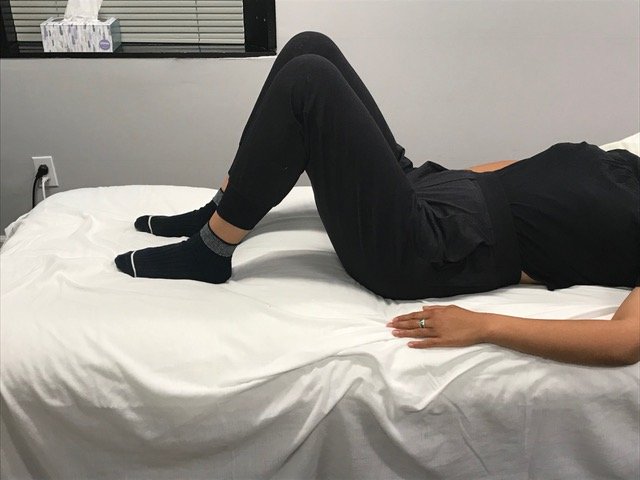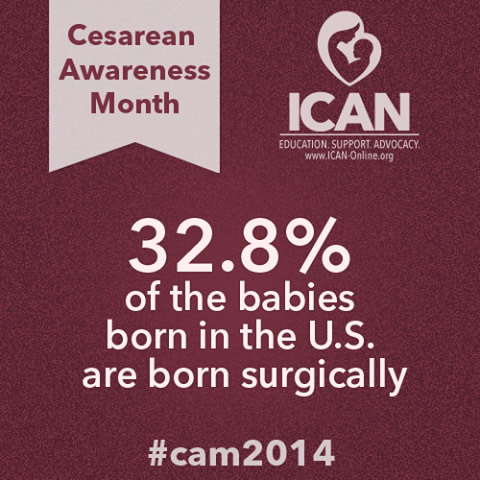
Learn To Do Cesarean Section Early Recovery Exercises
It’s Cesarean Section Awareness Month!
Trauma to the body is something all who give birth to a baby experience. With those who deliver via cesarean (c-section), there is the added trauma of an abdominal surgery in addition to the trauma of labor and delivery.
Today we will talk about post-delivery rehabilitation, with an emphasis for those who have had a cesarean. This information is all about self care to recover birth and is useful for ALL new mothers, whether delivering via the vaginal canal or a cesarean section.
In an upcoming blog post this month, we will discuss body mechanics of picking up a baby, breastfeeding, and the like after a C-Section.
Taking it Easy
The first 6 weeks after the birth of the baby will be a period of lots of change. The body will feel tired and worn out, with low energy. Labor scars (tears, episiotomy, cesarean section) may feel painful. Giving birth to a baby is no joke, so allow yourself time to heal. Do not over-exert your body and try to involve members of your support system for help. Avoid stairs for the first two weeks unless necessary. Gradually add activities every day once your strength and endurance improves.
Avoid strenuous activity such as weight training, jogging and running until after 12 weeks following a C-section, or when cleared by your doctor or licensed pelvic health therapist.
The First Week: Early Recovery Exercises
You may begin very gentle movements and exercises to help your body heal right after delivery, as soon as you are awake after labor. Gentle movements while you are in bed will help restore regular bowel movement, circulation to your body, and prevent issues such as problems with breathing and blood clots.
Deep Breathing
Practice breathing exercises at least 3-4 times an hour when you are awake. You can start as soon as you wake up after the delivery. Take 3-6 of these deep breaths then rest doing more than this may make you light-headed
- Relax shoulders and upper chest
- Take a slow, deep breath in through the nose to fill the lungs fully
- Hold the breath for 2-3 seconds
- Breathe out slowly through the mouth, as if gently blowing on a candle
Coughing
Coughing is the natural way to clear phlegm from the lungs. To help you cough, place a rolled towel or pillow over the cesarean incision to support the wound as you cough. You may wish to bend your knees up towards your chest also to support coughing. A few strong coughs have more effect than many weak ones. You can also “huff” to loosen phlegm, this will feel like a forced breath out of an open mouth, as if steaming up a mirror.
Walking
Walking as soon as you are able to after birth will improve digestion, decrease
muscle stiffness, and prevent blood clots. Support your incision as you walk and walk as often as you can without losing balance or causing pain.
Moving in Bed
Ankle Pumps and circles
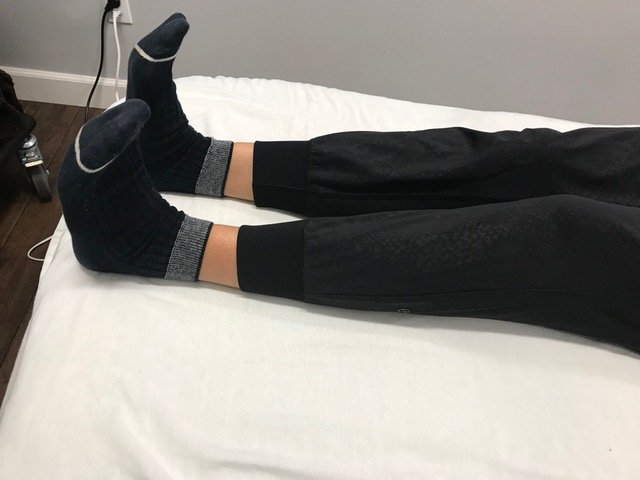
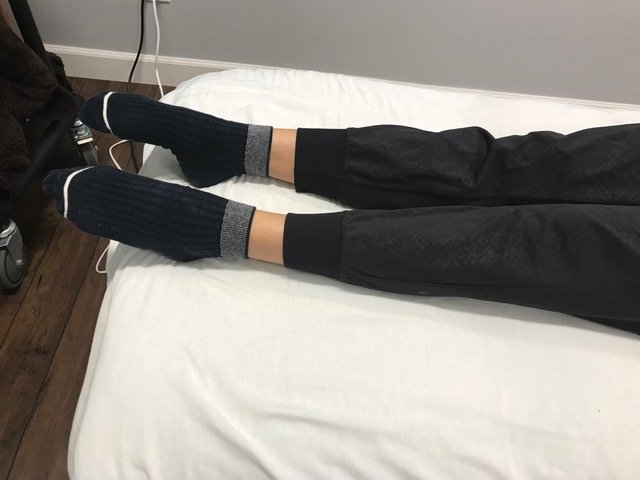
Flex both your ankles up, pulling your toes toward you, then point both your ankles down, pointing your toes away from you. In addition, rotate each foot clockwise and counterclockwise, keeping your toes pointed toward the ceiling.
Heel slides (hip and knee flexion)
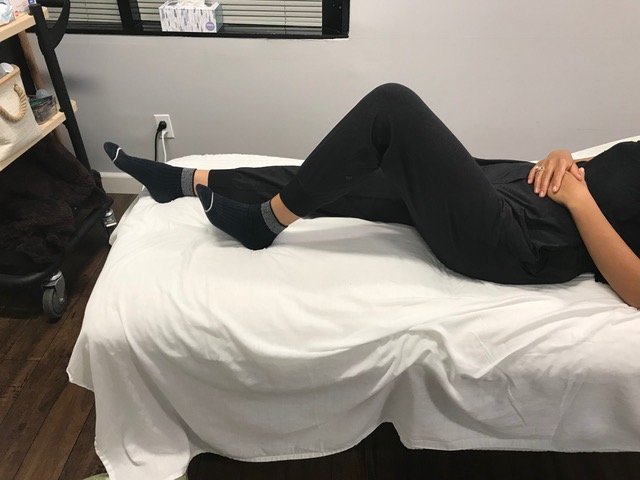
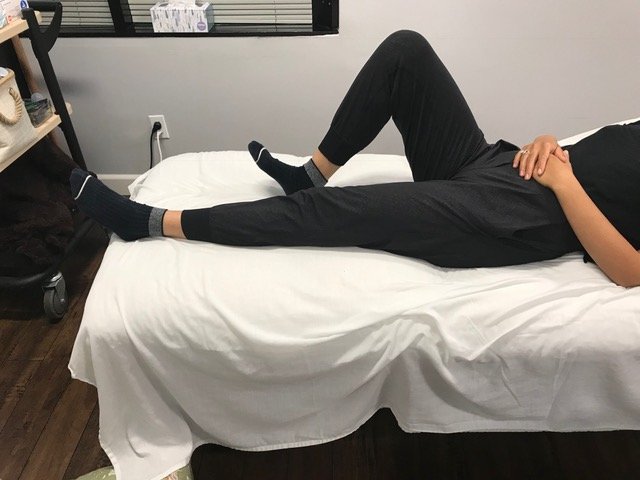
Bend your hip and knee by sliding your heel up toward your buttocks while keeping your heel on the bed. Slide your heel back down to the starting position. Keep your kneecap pointed up toward the ceiling during the exercise. You may want to use a plastic bag under your heel to help it slide easier. Repeat with opposite leg.
Pelvic Tilts
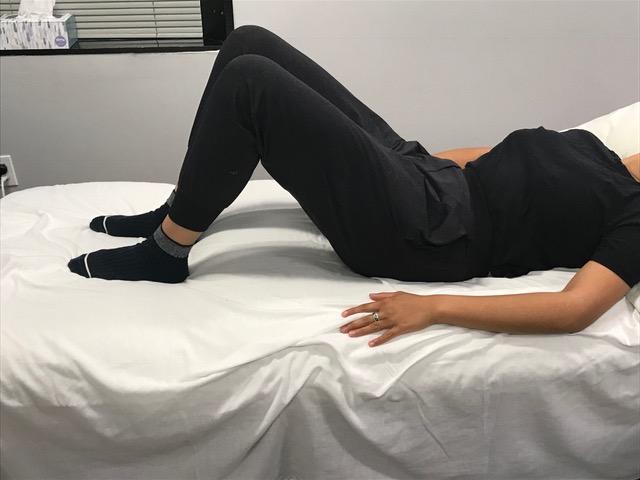
With both knees bent, gently tilt the pelvis toward the bed and up towards the face. Repeat 3-4 times without creating pain. This exercise helps you find a neutral position for the pelvis and will help low back muscles loosen.
Lumbar Rotation
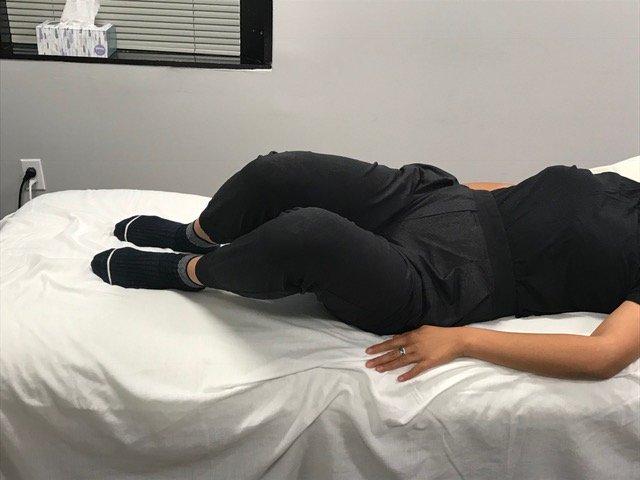
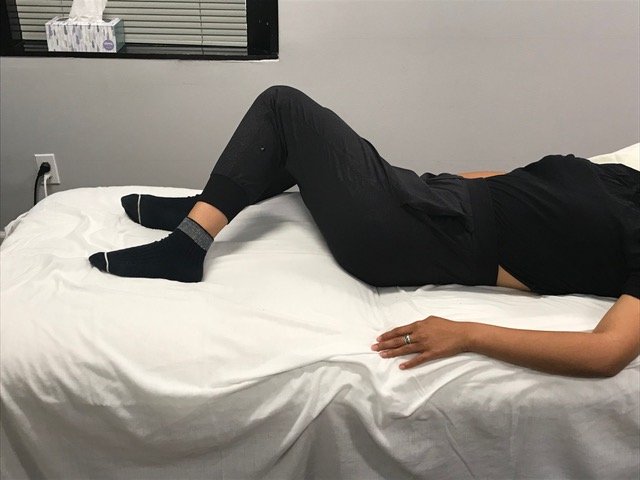
Lie your back firmly onto the bed, knees bent and feet flat on the bed. Keeping knees and legs glued together and lower knees to one side as far as your can go without the back popping up from the bed. Return the legs back to the starting position and then repeat to the other side. Repeat 2-3 repetitions, without creating pain. Complete 3-4 times a day while you are still moving less than usual.
Tummy Massage to Reduce Gas and Increase Motility
Many experience constipation after birth and cesarean section due to pain medications and general trauma to the area. A tummy massage will stimulate bowel activity and should begin ASAP after the delivery. Massaging the abdomen will help with both constipation and loose bowels, as well as general pelvic and abdominal pain.
Tummy Massage
-
Complete the massage from right to left, using soap in the shower, or lotion on the hands. Avoid directly touching the cesarean scar until it is healed (around 2 weeks). Until then, complete the massage around the incision site, keeping it free of contact with lotions.
-
Start by forming the letter “I” by stroking with moderate pressure from under the left ribcage down to the front of the left hipbone, 10x
-
Next, form the letter “L” by stroking with moderate pressure from the right ribcage, underneath the ribcage to the left, and down to the front of the left hipbone, forming the letter “L”
-
Last, do 10 strokes from the front of the right hipbone up to the right ribcage, across to the left ribcage, and down to the left hip bone, forming the letter “U”
-
The massage follows the path of the large intestine. It will calm irritated bellies and increase the motility (movement) of food in your gut
-
Finish with 1-2 minutes of a clockwise circular massage 2-3 inches away from the belly button to stimulate the small intestine. Avoid directly touching the cesarean incision until it is healed.
-
Do this massage 1-2x daily
Toileting Position
Many find going to the bathroom difficult after birth. Make sure you are in an ergonomic position as described below:
The best position to sit on the toilet:
- Always sit on the toilet seat. No hovering!
- Feet firmly planted on a step stool
- Legs are separated to hip width’s distance or wider, elbows resting on thighs
- Lean forward with your knees higher than your hips
- Allow belly to get soft, floppy, and relaxed
- Stay relaxed on the toilet; relax your breathing and practice deep breathing exercise as outlined above.
- Allow yourself time. Don’t rush. Don’t strain.
Other Toileting Tips:
Don’t ignore urges to use your bladder or bowel. Avoid straining, no pushing your pee out or holding your breath to force out a BM. Take your time and visualize the pelvic floor getting soft and heavy. Deep breathing, when done correctly, is much more efficient at emptying the bladder and bowel than straining and pushing.
That’s all for this post! In the next blog post we will discuss body mechanics of picking up a baby, breastfeeding, and the like after a C-Section.
If you’re in the process of recovering from a c-section delivery, feel free to schedule an appointment with one of our licensed physical therapists.

